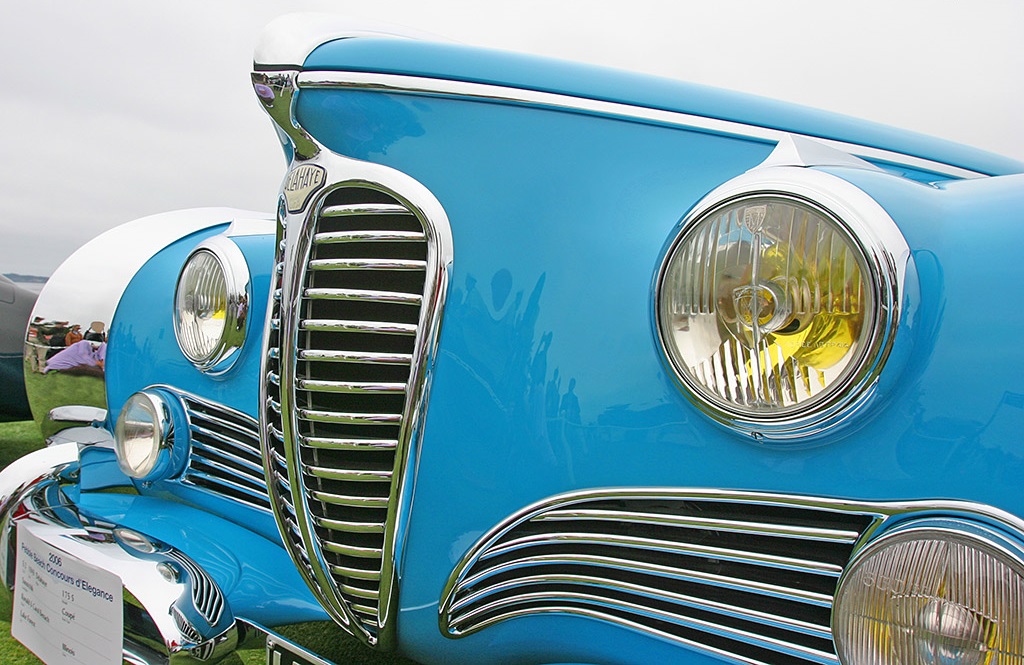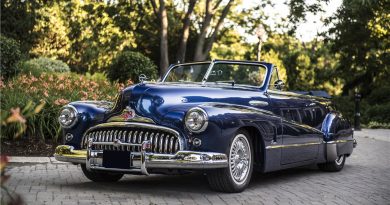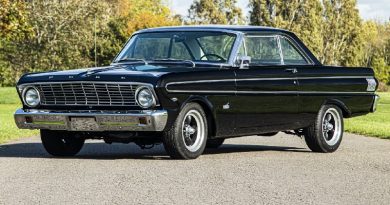1949 Delahaye 175 S Saoutchik Roadster
Delahaye was a family-owned automobile manufacturing company, founded by Émile Delahaye in 1894 in Tours, France. Manufacturing was moved to Paris following incorporation with two unrelated brothers-in-law as equal partners in 1898. The company built a low volume line of limited production luxury cars with coachbuilt bodies; trucks; utility and commercial vehicles; busses; and fire-trucks. Delahaye made a number of technical innovations in its early years; and, after establishing a racing department in 1932, the company came to particular prominence in France in the mid-to-late 1930s, with its Type 138, Type 135SC, and type 145 cars winning numerous races, and setting International records. The company faced setbacks due to the Second World War, and was taken over by amalgamation with arch competitor Hotchkiss in 1954. Both were taken over by the Brandt organization, within mere months, with automotive product manufacturing ended.
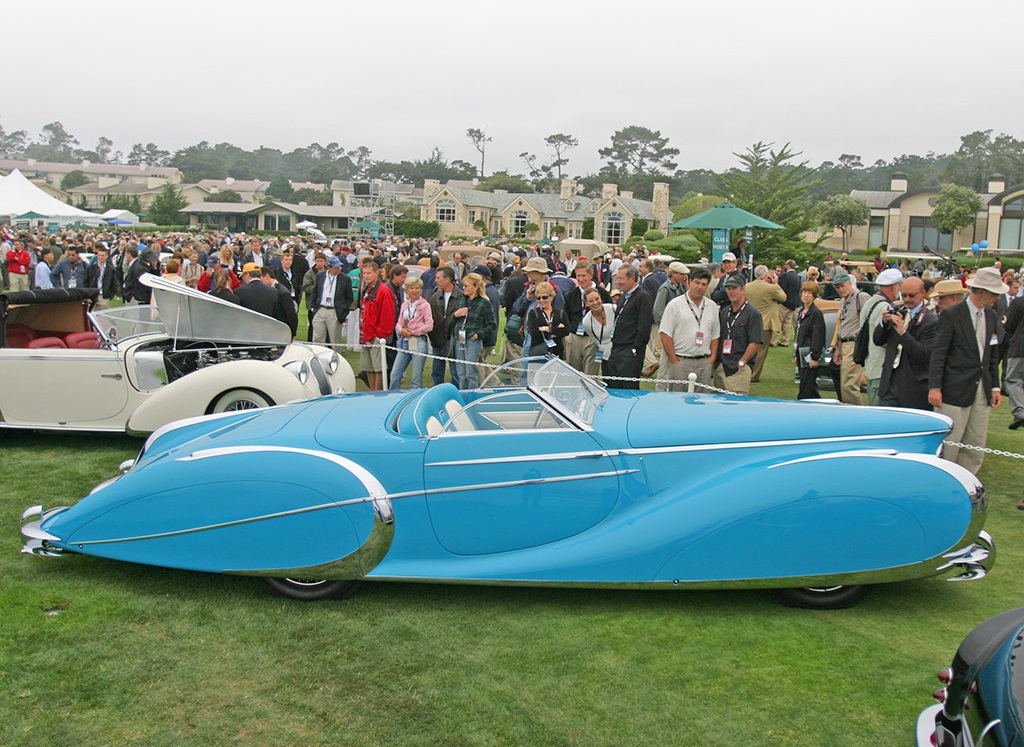
Created in 1949, this Delahaye built on a 175 chassis is a major work of J. Saoutchik.
But the great beauty of this roadster is in its lines, or rather in its curves. The keeper wheels accentuate the impression of length, the chrome is used in profusion, the grille is overhung by a rostrum recalling the convertible Narval by Figoni / Falaschi.

The new 4.5-litre engine was visually quite similar to the Type 135, but significantly improved. It had seven main bearings versus the Type 135’s four, and its cylinder head had six intake and six exhaust ports, twelve in all, versus nine in the standard Type 135 (a rare few Type 135 racing engines had twelve port heads). The excessively complex V12 had three camshafts in the block; four overhead rocker-shafts; three Stromberg carburetors (in the Types 145 and 155, but a single one in the detuned Type 165); two mechanical fuel-pumps, and dual Bosch ignition. The V-12 was replaced by a new, much less complex inline overhead-valve six-cylinder of the same displacement. The 1AL-183 and Type 2AL-183 engines, when equipped with a single carburetor, produced 140 horsepower and the standard compression ratio was a modest 6.8:1. The new 4.5-litre engine used in these cars carried the “183” engine-block casting code, and was made in two visually distinct forms.

What’s unique about the Delahaye was its contemporary beautification. You can see its wheels are almost hidden and its front has puzzling elements, which are completely contrary to our modern cars. The chrome was the name of the game during the time of its production, so it does feature this element at most places.
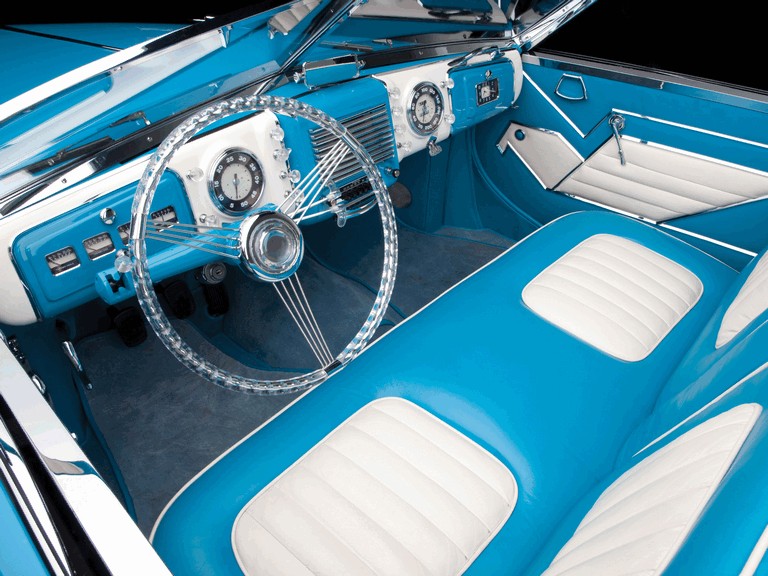
Much of this Delahaye’s beauty is also shown in details such as chrome accents that highlight the curves and feature embedded turn signals or the small strips which flank the side and add a sense of speed while hiding the door handles . At the front is a curious nose which was inspired by the Figoni et Falaschi-designed Narval produced just a year earlier. Inside, a two-tone interior is relentlessly busy and features a medley of designs that work together in their excess. Rows of knobs are everywhere and the see-through steering wheel made of lucite is unique.
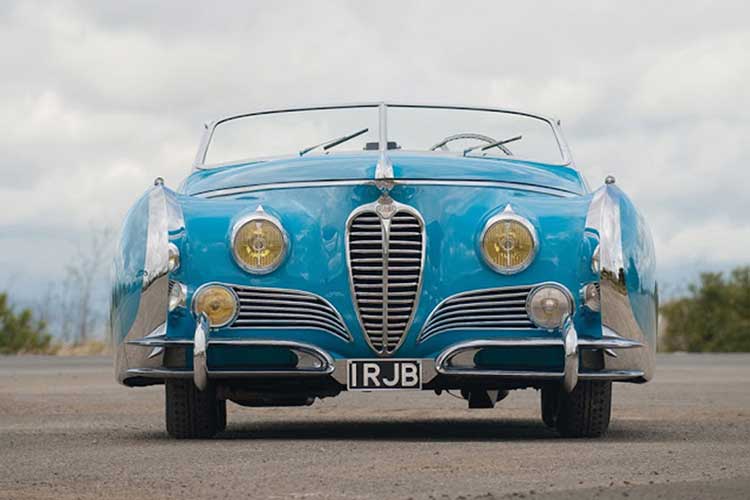
The car was unveiled sixty one years ago at the 1949 Paris Auto Show, and was exhibited at all the major European concours events that year, from Paris to Monte Carlo to San Remo, scooping the pool wherever it was exhibited. Indeed, whilst it will undoubtedly be the star of the auction this year at the Pebble Beach event, it won best-in-class in the Pebble Beach Concours d’Elegance in 2006 just a few months after a complete restoration. Just a few months later, the car was honored again, winning People’s Choice at the prestigious Amelia Island Concours d’ Elegance.
